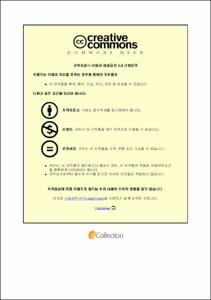Different Clinical Features and Outcomes According to the Disease Entity of Acute Aortic Syndrome: A 22-year Experience in a Single Tertiary Referral Hospital
- Abstract
- Background: Along with clinical introduction of non-invasive imaging modalities in daily practice, intramural hematoma (IMH) has been successfully incorporated as an important disease entity of acute aortic syndrome (AAS). However, clinical outcome data are limited to determine whether IMH is an independent prognostic factor in AAS.
Methods and Results: Clinical data of consecutive patients with AAS registered between 1993 and 2015 were analyzed. A total of 1,012 patients (mean age, 59.2 ± 13.8 years; 557 men [55.0%]) were enrolled, which included 672 with classic aortic dissection (AD, 66.4%) and 340 with IMH. Type A AD was the most common (n = 394, 38.9%), followed by type B AD (n = 278, 27.5%), type B IMH (n = 202, 20.0%), and type A IMH (n = 138, 13.6%). Patients with AD were younger than those with IMH (56.5 ± 14.1 vs. 64.6 ± 11.3 years, p<0.001). Patients with AD showed more frequent involvement of the ascending aorta (59.0% vs. 40.8%, p<0.001), whereas those with IMH showed higher frequency of distal aorta involvement (40.8% vs. 59.2%, p<0.001). Surgical intervention was performed more frequently in patient with AD than in those with IMH (61.0% vs. 16.5%, p<0.001). The frequency of surgery was significantly higher in patients with type A AD than in those with type A IMH (90.6% vs. 37.0%, p <0.001). Overall in-hospital mortality was 8.6% (87/1,012), and mortality rate showed marked variation according to the underlying disease entity: it was the highest in patients with type A AD (15.0%), followed by type A IMH (8.0%), type B AD (5.0%), and type B IMH (1.5%, p<0.001). Disease entity of AAS (AD vs. IMH) was proved to be an independent variable determining hospital outcome (odds ratio [OR] 4.117, 95% confidence interval [CI] 2.219-8.195, p<0.001). Other variables included the affected site of the aorta (proximal vs. distal), age, cardiac tamponade, and syncope. The 3-year survival rate was the highest in type B IMH (92.2 ± 1.9%), followed by type A IMH (87.4 ± 2.9%), type B AD (85.2 ± 2.2%), and type A AD (77.5 ± 2.1%, p <0.001).
Conclusions: IMH comprised significant proportion of patients with AAS and showed different clinical features and outcomes compared to classic AD. These findings suggest that IMH should be regarded as an independent disease entity, not just a precursor of classic AD.
- Issued Date
- 2017
- Awarded Date
- 2018-02
- Type
- Dissertation
- Affiliation
- 울산대학교
- Department
- 일반대학원 의학과
- Advisor
- 송재관
- Degree
- Master
- Publisher
- 울산대학교 일반대학원 의학과
- Language
- eng
- Rights
- 울산대학교 논문은 저작권에 의해 보호받습니다.
- Appears in Collections:
- Medicine > 1. Theses (Master)
- 파일 목록
-
-
Download
 200000003174.pdf
기타 데이터 / 421.04 kB / Adobe PDF
200000003174.pdf
기타 데이터 / 421.04 kB / Adobe PDF
-
Items in Repository are protected by copyright, with all rights reserved, unless otherwise indicated.